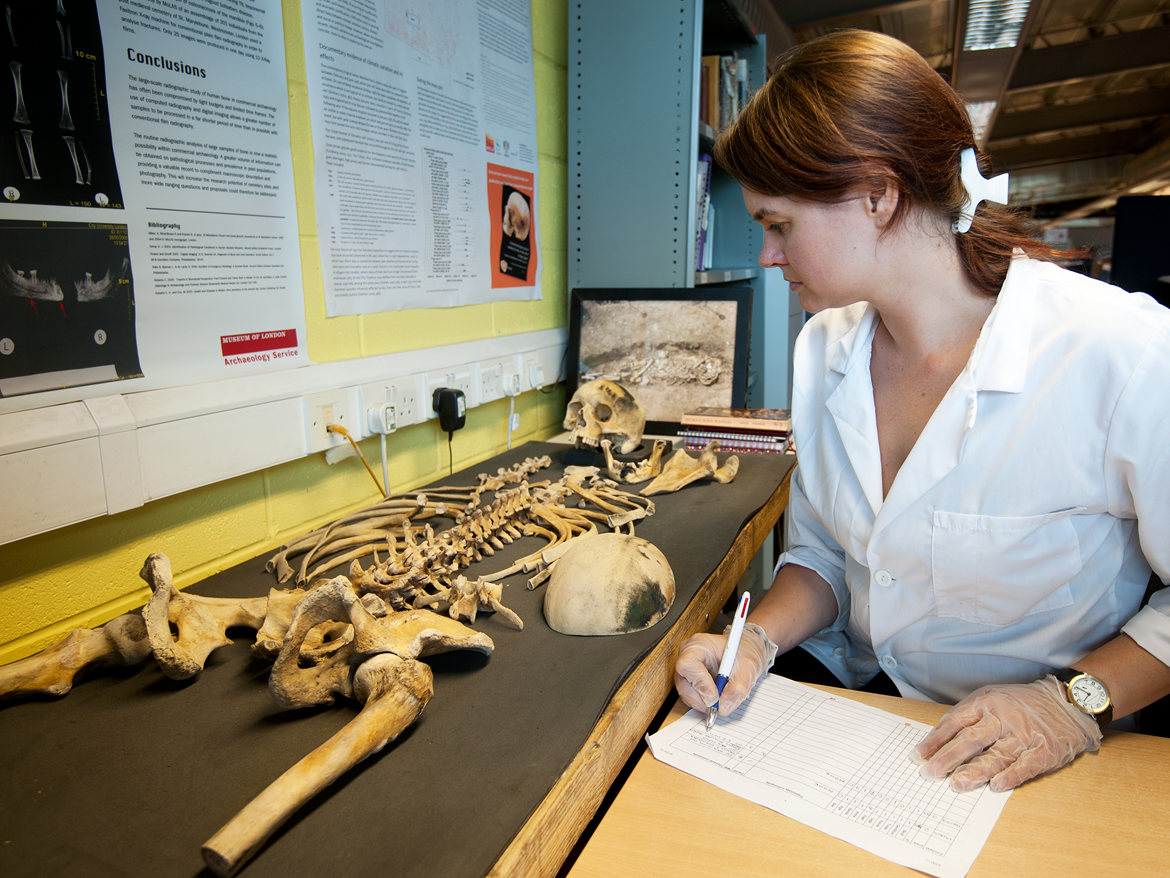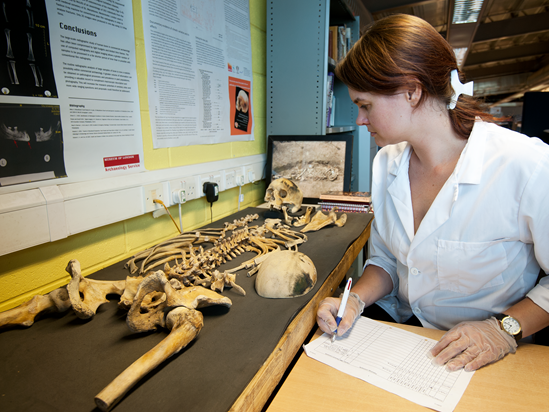- Timelapse video of archaeological work on site: https://www.youtube.com/watch?edufilter=NULL&v=Xfw3zr4VZRU
- Images and video of discoveries from site: https://www.dropbox.com/sh/qqnijwu1fs9pipy/AACYZ_rg3K4k7u5dqXmm-L7Da?dl=0
The 12-month archaeological phase saw 70 archaeologists from MOLA Headland Infrastructure excavate 6,500 sets of human remains from the burial ground where the HS2 station is being built.
Park Street burial ground was opened in 1810 as an overflow cemetery for St Martin-in-the-Bullring and remained open for only 63 years, closing to public burials in 1873.
Archaeologists are now beginning to examine the skeletons in closer detail, alongside artefacts discovered within the burial ground, including figurines, coins, toys and necklaces. Name plates have been found with a small number of the people buried at the site, and the team will combine research of historical documents, such as parish records and wills, with analysis of the skeletons, to develop detailed biographies of these individuals.
The archaeologists who worked on the Park Street archaeological dig will share their interesting discoveries and initial findings from the site with the local community on Saturday 21st at Eastside City Park in conjunction with the National Trust’s Heritage Open Days.
The archaeological work at the Curzon Street site was carried out by experienced MOLA Headland Infrastructure archaeologists and osteologists (experts in studying human remains), LM (Laing O’Rourke and J Murphy & Sons Ltd) and the Design Joint Venture DJV (WSP and Ramboll).
Work on site now moves on to ground remediation, utilities diversion and test piling for the foundation of the HS2 Curzon Street station.
Mike Lyons, HS2 West Midlands Programme Director said:
“Birmingham is at the heart of the HS2 network and we’re proud to have reached this first major milestone in the construction of Curzon Street station.
“Across Birmingham and the West Midlands, we’re making significant progress building Britain’s new high-speed railway. Freeing up space across the existing rail network to run more local trains, HS2 will give passengers thousands of extra seats every day, and take cars and lorries off our busy roads.
“We already know that Birmingham played a pivotal role in the Industrial Revolution and HS2’s archaeology programme will allow us to tell the story of the skilled workers who fuelled it.
“As part of our commitment to being a good neighbour, we’ve teamed up with the National Trust’s Heritage Open Days where we will be sharing with the local community our discoveries and insights from the site and what we’ve learned so far.”
Commenting on the end of the archaeological fieldwork, Claire Cogar, Lead Archaeologist from MOLA Headland, said:
“The careful and fascinating excavation of Park Street burial ground is telling us a great deal of the effects of life in 19th-century Birmingham on the population. By analysing the archaeological remains, we hope to build a picture of the lives of the people who built Birmingham and made the city what it is today, from the diseases they suffered and what they ate, to where they came from. Our initial findings have already identified evidence of diseases including scurvy and rickets.
“We have also found interesting objects placed into burials. One burial contained a bone-handled knife, another had a figurine and others contained dinner plates. These finds provide insights into the types of burial rituals, traditions and practices of the 19th-century.”
Following archaeological and scientific research, the remains will be reburied together in consecrated ground at a suitable location identified in consultation with representatives of the Church of England.

